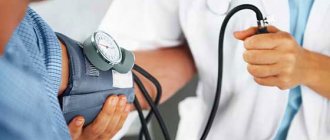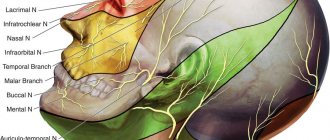March 29, 2018
Neurology is a branch of medicine that deals with the study of diseases of the central and peripheral nervous system. It is very closely related to other areas, namely psychiatry, anatomy, neurogenetics and others. Some people mistakenly call neurology any disease of the nervous system in humans. But it is still worth remembering that this is a direction in medicine, and not a specific ailment.
According to statistics, neurological diseases occupy one of the first places in the world in terms of prevalence. They can arise and actively develop at any age, and sometimes even in the womb. In such cases, we are talking about congenital pathology. An unhealthy lifestyle, injuries and severe stress can also cause the development of diseases. Taking into account the modern rhythm of life, the first signs of illness can appear even in young and, at first glance, absolutely healthy people.
Neurological diseases
The most common ailments are:
- Migraine . It is difficult to imagine a person who has never had a headache in his life. Some people don’t even consider it a disease - just temporary discomfort. One tablet and the problem is solved in literally 15–20 minutes. But there are people whose headaches appear frequently and last a long time, and miracle pills do not help. You cannot do without consulting a neurologist.
- Insomnia . This disease is more severe than the first, although most people do not take it seriously. Keeping sleeping pills on hand at all times is not the best way out of the situation. Without taking action in time and without undergoing a course of treatment, a person risks getting epilepsy, arthritis, stroke and other diseases of the nervous system.
- Epilepsy . Doctors still cannot fully determine all the reasons why it occurs. At the same time, genetic predisposition has not been proven: some patients have relatives suffering from epilepsy, but the relatives of others know about this disease only by hearsay. The cause of the disease can be a tumor, head injury, impaired blood supply to the brain, and even viruses. Epilepsy is accompanied by convulsive seizures. What is noteworthy is that the patient does not remember at all what happened to him during the seizure. Therefore, relatives must be nearby during an attack so that the patient does not harm himself.
- Stroke . A common disease among older people. Prompt assistance during an attack is fundamental to the patient’s continued well-being. A stroke is a consequence of impaired blood circulation in the brain. The blockage of the artery occurs gradually, and the attack itself is the result of hemorrhage in vulnerable places. The likelihood of a stroke is very high if the patient suffers from diabetes, arrhythmia, pressure changes, or is overweight. The disease can be identified by appearance, speech and coordination of movements. On one side of the body, muscles fail, so a crooked smile is often observed, and a person cannot raise his arms to the same level.
- Multiple sclerosis . One of the most dangerous diseases. The myelin endings of the nerves are destroyed and plaques form in their place. They interfere with the normal flow of impulses from the brain to other organs. Timely diagnosis and proper treatment can slow down and stop the development of the disease, even for several years.
- Alzheimer's disease. A severe neurological disease characterized by memory loss in the patient. A person cannot remember what he did literally half an hour ago, simple words, and even forget who he is and where he lives.
For any neurological disease, it is important to “sound the alarm” as early as possible and consult a doctor. When the first signs appear, you should definitely conduct the necessary research.
Symptoms and signs of neurological disease in adults
How neurology manifests itself in adults - in the form of symptoms familiar to many. Here are the most common:
- Headache.
- Migraine.
- Dizziness.
- Painful sensations of varying intensity in any part of the body (pain in the head, back and lower back, pain in the legs, arms, joints).
- Speech impairment.
- Decreased memory and attention.
- Decreased visual acuity, drooping eyelid (ptosis), double vision.
- Fast fatiguability.
- Decreased performance.
- Sleep disorders.
- Tendency to depression.
- Tendency to faint.
- Impaired coordination of movements.
- Noise in the head.
- The appearance of convulsions, epileptic seizures.
- Numbness of the limbs, coldness, loss of sensitivity in the fingers.
- Tremor (shaking) of the limbs.
- Difficulty in swallowing.
- A nervous tic in the form of frequent blinking in adults is also a cause of neurological disorders.
- Etc.
Neurology in children
A difficult area in medicine that requires maximum care and highly qualified specialists. Neurology in children differs significantly from diseases in adults. The thing is that at a very young age the disease develops differently and is accompanied by unexpected symptoms and signs, which sometimes cannot even indicate its presence.
Neurological diseases in children can result from:
- injuries after difficult childbirth;
- unhealthy lifestyle of a pregnant woman (smoking, drug use, alcohol);
- hypoxia in the womb;
- predisposition - if the parents have genes for the disease;
- infections;
- the special location of the fetus in the womb (this often includes the entwining of the umbilical cord around the baby’s neck).
Although neurological diseases in children can appear at any age, most of them can be detected at the earliest stages and even during pregnancy. Early diagnosis allows you to start a course of treatment on time, which increases the chances of a full recovery and further normal development.
It is for this reason that young parents are strongly advised to show their child to the pediatrician regularly. In case of minimal deviations, he will refer you for examination to a neurologist and other specialists.
What kind of help do we provide?
When choosing treatment methods, doctors take into account the stage of development of the disease, age and general condition of the patient. The Russian Gerontological Research and Clinical Center provides primary and secondary prevention of stroke, early diagnosis of dementia and Alzheimer's disease, complex drug treatment, botulinum therapy for neurological diseases, physiotherapy, massage, physical therapy, and sessions with a psychologist. The department includes 44 beds (2- and 3-bed wards, as well as superior wards).
Our doctors are proficient in the methods of classical neurological examination and treatment, additional methods of functional diagnostics (EEG, ENMG, EMG), neuropsychological testing, therapeutic drug blockades, kinesiotaping and botulinum therapy, and regularly attend medical conferences in Russia and abroad.
Causes of nervous system diseases and their symptoms
What can be the impetus for the appearance and development of diseases? A number of reasons include:
- constant stress and tension;
- feeling of emotional emptiness and discomfort;
- sleep disturbance, lack of sleep;
- lack of activity;
- sedentary lifestyle;
- consequences of previous infectious diseases and head trauma;
- unbalanced diet;
- alcohol abuse;
- lack of vitamins, minerals and other beneficial substances in the body;
- drug use.
Elderly people are most susceptible to neurological diseases due to the increased likelihood of accelerating degenerative processes. However, in recent decades, diseases have become “younger”, affecting people of middle age and younger.
What symptoms of the disease should alert you? This:
- Headaches of various types. They can be compressive or occur suddenly and spontaneously. In the first case, it seems that the head is compressed by a hoop. The second attack is preceded by a flash, the patient is irritated by loud sounds, light and other factors. Sometimes your head hurts so much that you can’t stand or sit, much less work or play sports.
- Dizziness. A person loses a sense of balance when walking, and may even lose consciousness. This is often caused by damage to the vestibular apparatus or disruption of blood flow through the arteries of the spine. Dizziness can result from a sharp turn of the head in any direction.
- Speech, writing, reading disorders. The patient has difficulty pronouncing even ordinary words, not understanding the speech, despite the fact that he hears it. Difficulties may arise with the names of the most common objects and recognition of loved ones and relatives.
- Movement violation . May manifest as weakness of the limbs or even involuntary actions. These phenomena are called paralysis. This also includes increased muscle tone, spasms, tremors and convulsions. The level of damage and methods of treatment can only be determined by a doctor.
- Visual impairment. If the patient does not have eye diseases, then decreased acuity and narrowing of the field are a characteristic symptom of neurological ailments. In this case, the examination is carried out together with an ophthalmologist.
- Sensory impairment . A person does not feel cold, warmth or even pain. There may be no sensitivity either in a certain area of the body or in the entire limbs.
- Hearing loss. Ringing and tinnitus are often a symptom of neurological diseases. Typically accompanied by headache or dizziness. The patient should also be wary of hyperacusis - a sharp increase in hearing, which leads to irritability with sounds.
Panic attacks, a lump in the throat and excessive tearfulness are also symptoms of diseases of the nervous system. It is worth coming to see a doctor even if one of them is identified. Early diagnosis and identification of the problem is the key to successful treatment and quick recovery.
Tunnel syndromes
(compression-ischemic neuropathies) develop as a result of compression and ischemia of nerve fibers in anatomically narrow fibrous and fibro-osseous canals. The walls of these canals are natural anatomical structures (bones, tendons, muscles), through which peripheral nerves and vessels pass freely, but with certain pathologies, the anatomical tunnels can narrow, which leads to compression of the nerve.
Etiology
Currently, there are many reasons leading to the development of this group of diseases.
Main risk factors:
- Genetic predisposition (anatomical narrowness of the tunnels)
- Professional
- Installation of the upper limb in a static position (working on a computer), forced long-term positions
- Monotonous repetitive flexion and extension movements (musicians, artists, jewelers, athletes).
- Work in low temperature conditions (butchers, fishermen, workers in fresh frozen food departments).
- Working in vibration conditions.
- Increasing intratunnel tissue pressure (pregnancy, menopause, obesity, renal failure, hypothyroidism, congestive heart failure, rheumatological diseases, taking oral contraceptives).
- Factors that change the contour of the anatomical tunnel (traumatic changes, arthrosis).
- Space-occupying formations of nerves (neurofibroma, ganglioma, schwannoma).
- Neuropathic factors (diabetes mellitus, alcoholism, hyper- or vitamin deficiency, contact with toxic substances).
The main mechanism of pathogenesis in compression-ischemic neuropathies consists of a combination of mechanical trauma to the nerve, increased intratunnel tissue pressure and ischemic damage to the nerve inside the canal. As a result of long-term mechanical microtrauma, the nerve undergoes local demyelination, which initially develops at the site of compression and then can spread along the nerve. In the nerve and paraneural tissues, due to compression, blood flow is disrupted, which leads to ischemia and tissue hypoxia, edema and swelling of the nerve and tissues inside the tunnel develop. A vicious circle is formed, consisting of ischemic disorders, local metabolic changes and venous stagnation.
Clinical picture
The clinical picture of tunnel neuropathies is diverse and manifests itself depending on the composition of the fibers of the affected nerve. Tunnel syndromes are represented by sensory, motor and autonomic disorders. Most often the disease debuts with pain and sensory disorders. Sensory disorders are manifested by crawling sensations, numbness, burning, and decreased tactile and temperature sensitivity in the area of nerve innervation. Compression neuropathies are characterized by neuropathic pain, allodynia, hyperpathy, and an electric sensation. Motor disorders are manifested by decreased strength in the innervated muscles and increased fatigue. Swelling, decreased sweating, and changes in the color of the skin of the affected limb are vegetative manifestations. The above symptoms worsen after physical activity and/or at night.
Compression-ischemic neuropathy of the median nerve at the level of the carpal tunnel (carpal tunnel syndrome, carpal tunnel syndrome)
This is the most common tunnel neuropathy. Develops as a result of compression of the median nerve under the transverse carpal ligament. Patients complain of pain in the wrist and 1-3 fingers, numbness in 1-3 and half of the 4th fingers, a crawling sensation, and a burning sensation. Often, symptoms worsen at night, which leads to frequent awakenings at night, forcing the patient to take an upright position, rub, and shake the brush to reduce symptoms. Over time, awkwardness appears when grasping small objects, fastening buttons, tying shoelaces.
Pronator teres syndrome
occurs due to compression of the median nerve in the upper third of the forearm under the pronator teres muscle. Guitarists, flutists, athletes, and nursing mothers are susceptible to the disease; this syndrome is also known as “honeymoon paralysis.” There is pain in the forearm, which intensifies with pronation of the hand. Sensory disorders occur in the area of digits 1-3 and in the thenar region.
Cubital tunnel syndrome.
When the ulnar nerve is compressed in the area of the cubital canal, numbness occurs in the 4.5 fingers and the hypothenar area. Symptoms are worse when bending the elbow and at night. As the disease progresses, weakness appears in 4.5 fingers of the hand, hypotrophy of the hypothenar muscles and 1 interdigital space.
Meralgia paresthetica
(neuropathy of the external cutaneous nerve of the thigh)
The nerve is pinched in the tunnel under the inguinal ligament, or at the level of the anterior superior iliac spine. The disease manifests itself as pain, numbness and paresthesia in the area of the anterolateral thigh. At the beginning of the disease, paresthesia appears and intensifies when standing or walking, or when compressed by clothing, then becomes permanent. Risk factors are: excess weight (abdominal obesity), wearing a tight belt, tight trousers, especially low-rise ones, pregnancy.
Obturator canal syndrome
The obturator nerve is pinched in the obturator canal due to fibrosis, osteophytes of the pubic bones, hernia of the canal, and traumatic swelling of the soft tissues. The clinical picture is represented by pain in the groin area and the inner surface of the thigh, which intensifies with straining, with extension, abduction and internal rotation of the thigh. Over time, hypotrophy of the adductor muscles of the thigh appears, and difficulties when “crossing” the sore leg onto the healthy one.
Fibular syndrome
— compression neuropathy of the common peroneal nerve at the level of the neck of the head of the fibula from external influences or compression at this level of the neurovascular bundle due to prolonged intense rapprochement of the biceps femoris muscle with the head of the fibula. It often manifests itself in people who work in a squatting position due to prolonged posture “crossing one leg”, staying in a high chair with legs hanging freely, or sleeping in an uncomfortable position. Fibular syndrome is characterized by the development of peripheral paresis of the extensors of the foot with gait disturbance (steppage), paresthesia and hypoesthesia along the outer surface of the leg and on the dorsum of the foot.
Diagnostics
Diagnosis of tunnel neuropathies is based on a thorough analysis of clinical manifestations and identification of occupational and somatic risk factors. If carpal tunnel syndrome is suspected, it is necessary to thoroughly examine the patient's limb, evaluate the anatomical features of this area, identify the presence of bone deformations, and traces of early traumatic injuries. Next, the sensitivity (pain, temperature, vibration, discrimination) of the affected limb must be studied, and motor function must be assessed. During examination, you should pay attention to possible autonomic disorders.
There are special diagnostic provocative tests that allow one to suspect compression of the nerve in the anatomical tunnel. The most universal is the Tinel test (percussion is performed with a neurological hammer in the area of the anatomical tunnel).
Electroneuromyography (ENMG) is necessary to confirm the clinical diagnosis, as well as to determine the extent of nerve damage. ENMG is recognized as the “gold standard” for the instrumental diagnosis of tunnel neuropathies.
Ultrasound examination (ultrasound) makes it possible to visualize the nerve and surrounding structures. Ultrasound allows you to diagnose tenosynovitis of the surrounding muscles, as well as rare causes of tunnel neuropathies, such as space-occupying lesions (neurinoma, schwannoma).
MRI can be used to determine the location of nerve compression, especially after traumatic injuries and after surgery in the affected limb, and also as a method of differential diagnosis in cases with questionable symptoms
Treatment
First of all, the patient should be given recommendations for correcting daily and professional activities, correcting existing risk factors, as well as reducing the load on the anatomical area. It is imperative to prescribe physical exercises to increase the sliding of the nerve inside the tunnel and avoid its fixation.
It is necessary to stop physical impact in the affected area. Therefore, immobilization of this anatomical area is prescribed, and special devices are used - orthoses, bandages, splints.
Local injections of glucocorticoids with an anesthetic into the area of the anatomical tunnel are recognized as an effective method of treatment. Typically, no more than 3 blockades are performed at intervals of 2–3 months. For some tunnel syndromes, the use of botulinum toxin injections is justified.
If drug therapy is ineffective, surgical treatment is recommended, which involves decompressing the nerve in an anatomically narrow tunnel.
Understanding the etiological and pathogenetic mechanisms of the development of compression-ischemic neuropathies allows us to individually select treatment and prevent the progression of the disease.
Diagnostics
Conventionally, all methods for identifying neurological diseases can be divided into manual, instrumental and laboratory.
In the first case, the examination is carried out by a doctor in the office using a special hammer. He tests the patient's sensitivity in various ways. If this method is not enough or the problem is serious, the specialist will prescribe additional studies.
Instrumental diagnostics are carried out using electric wave, radiation or ultrasound equipment.
Electrical ones include:
- EEG (electroencephalography) is a painless procedure that will help diagnose epilepsy, panic attacks and migraines. With the help of such equipment, it is possible to detect brain damage due to trauma and concussion.
- Electroneuromyography. It involves recording the electrical activity of muscles and the functioning of the central nervous system. Allows you to identify myotonia, dystonia, stages of development of sclerosis and other similar ailments.
All procedures must be carried out by experienced specialists who are able to identify signs of the disease during diagnosis.
Radiation methods include X-ray, computer, magnetic resonance and nuclear magnetic tomography. They can identify tumors and neoplasms, cysts and traumatic brain injuries. An image of the area being examined is displayed on the screen. The picture can be enlarged or reduced to assess the threat or search for it. Functional methods include those radio wave studies, during which you can see the organ in dynamics.
In modern neurology, ultrasound examinations also help to diagnose diseases: Dopplerography and echocardiography.
What symptoms should you consult a neurologist for?
Depending on the stage of development and location, diseases of the nervous system manifest themselves differently, but pathological conditions have similar signs:
- general neurological disorders - pain, problems with memory and attention, sleep disorders (constant drowsiness or insomnia), increased fatigue, emotional instability;
- movement disorders - changes in muscle tone, convulsions, tremors, tics, paresis, instability when walking, etc.;
- disorders of a vegetative nature - dizziness, pressure changes, disturbances in thermoregulation and skin trophism, fainting, panic attacks.
Attempts to self-medicate pathologies of the nervous system only worsen the course of the disease. Basically, people choose medications that alleviate symptoms, but the cause of the disease itself cannot be eliminated in this way. Many come to the clinic only when the disease is already advanced and has become chronic. Treatment in such cases will be long and difficult, especially for elderly patients. In old age, people often need round-the-clock care in a hospital setting.
How to stay healthy
The main reason for the appearance of diseases of this type is disruption of the nervous system. If they have not been a pathology since childhood, then their occurrence can be triggered by chronic fatigue, constant stress at work and at home, bad habits, as well as a lack of vitamins in the body. To prevent the development of neurological diseases, you just need to:
- exercise – preferably regularly, and not a couple of months of intense exercise a year in order to “lose weight by summer”;
- rest fully - this means healthy sleep of at least 8 hours a day (at night, not during the day);
- eat right - it is with food that we get all the nutrients the body needs, so watch what’s on your table;
- walk in the fresh air - it doesn’t matter whether you decided to take a walk after work or deliberately went to the park. If the weather permits, and things can wait 15–20 minutes, then why deny yourself the pleasure.
Alcohol and tobacco abuse can also cause neurological diseases. Toxic substances have a destructive effect on the entire body as a whole. Do you smoke? Drop it! The body will thank you with good health and excellent mood. As for alcohol, nothing bad will happen from a glass of good wine with dinner. The main thing is to know when to stop.








